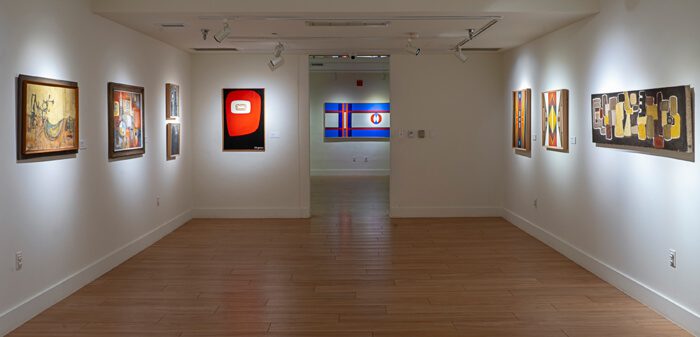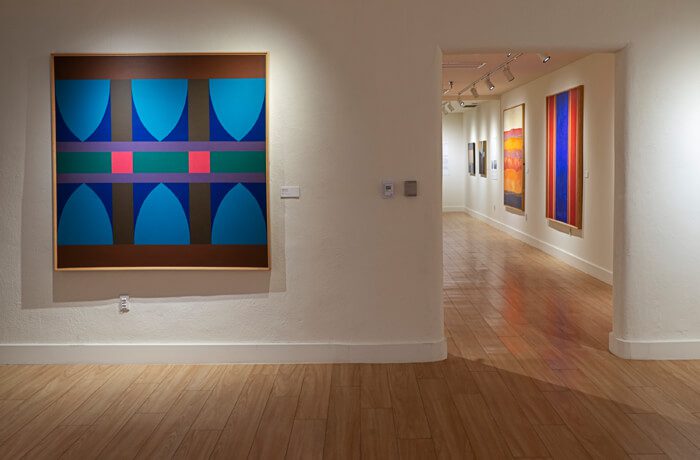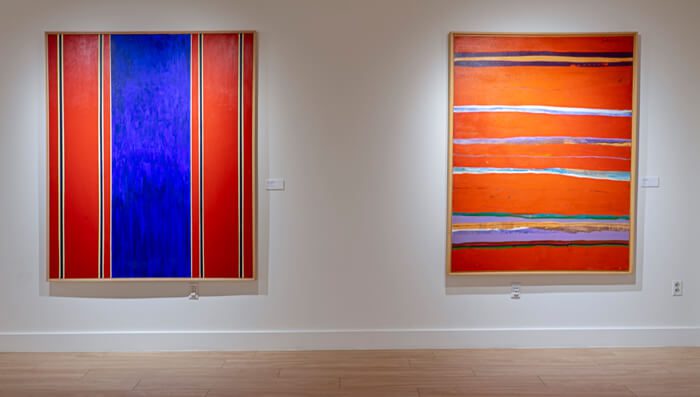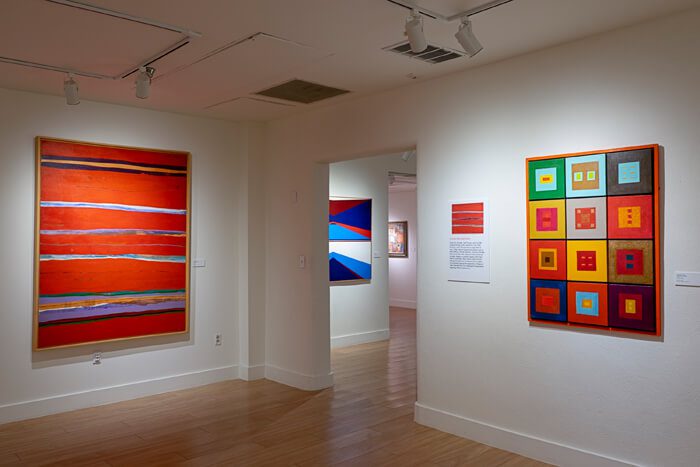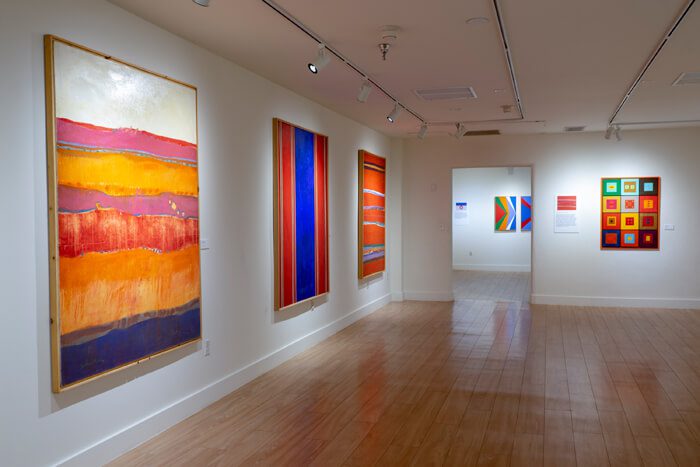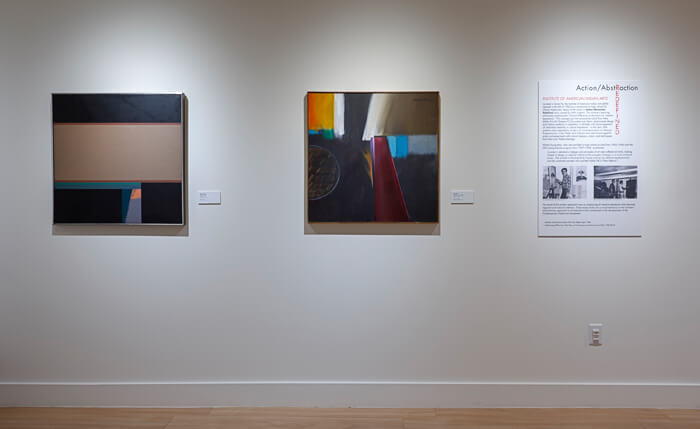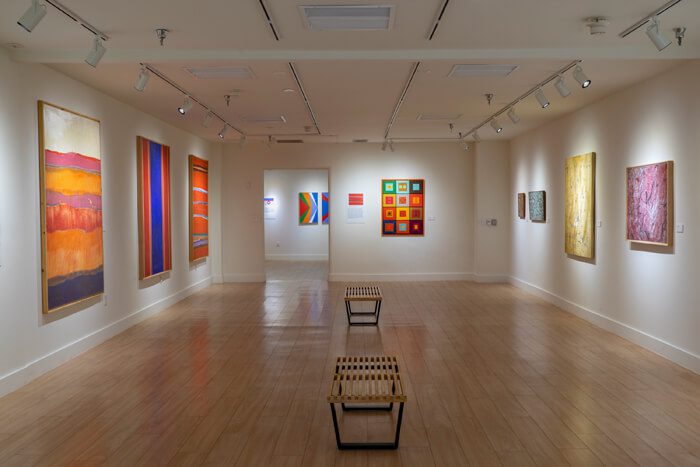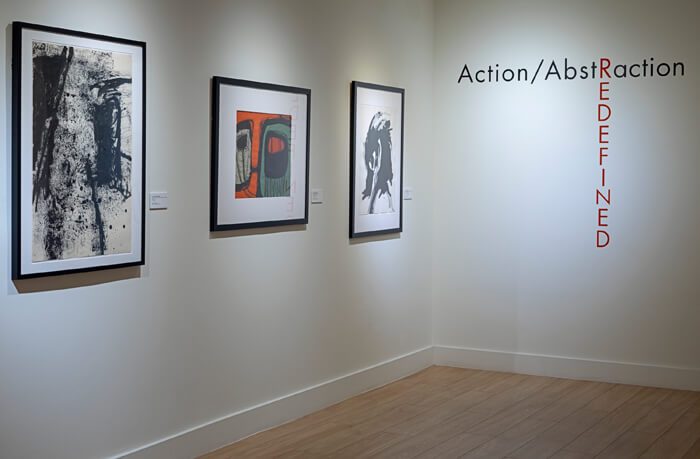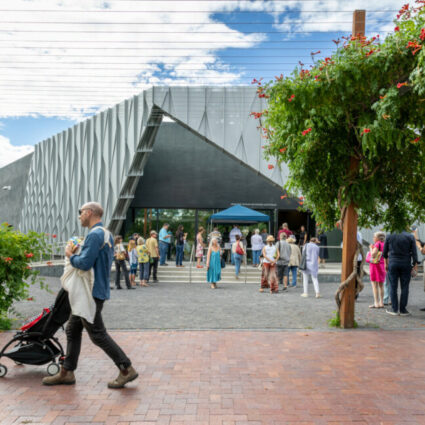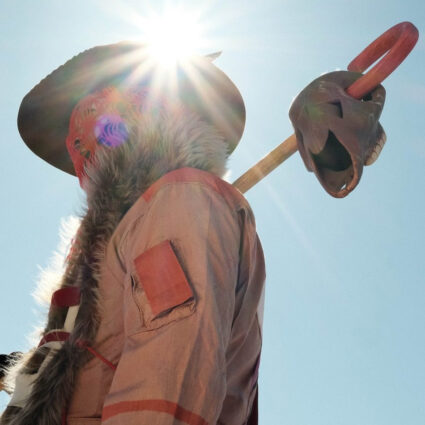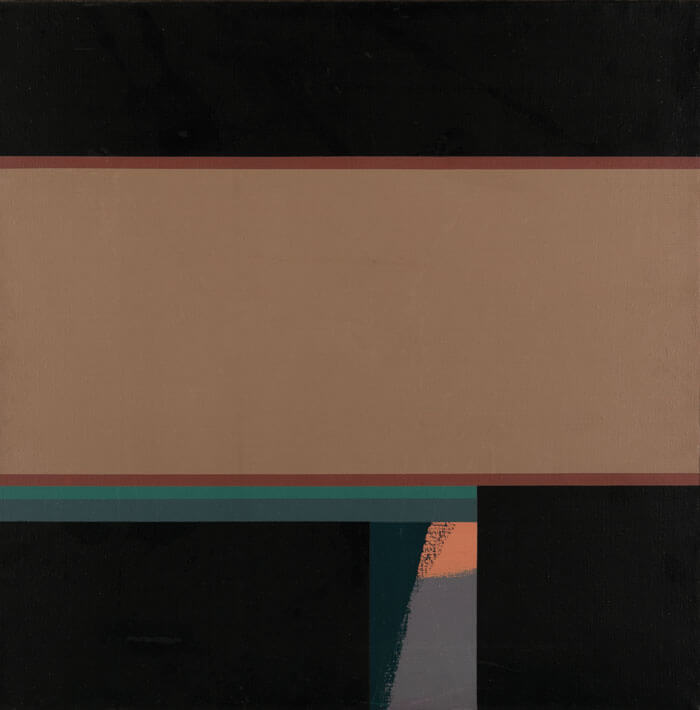
IAIA Museum of Contemporary Native Art, Santa Fe
July 27, 2017 – July 7, 2019
There’s a valuable history lesson in pedagogy and modernism upstairs at the IAIA Museum of Contemporary Native Arts right now. Action/ Abstraction Redefined examines the thread of Native Modernism from the MoCNA permanent collection and also offers a clear capsule of founding Art Director Lloyd Kiva New’s (Cherokee) educational mission for the Institute of American Indian Arts since its inception in 1962. I stress the importance of New, since most of the works included by some fifty artists come from IAIA alumni and faculty and from the program’s first two decades. New created an education system that freed students of convention and allowed for them to learn based on individual interests and experiments. In the catalogue essay “Cultural Constructivism,” Ryan Flahive describes New’s desire to engage Indigenous youth in a changing world and lists educational principles applied at IAIA: teacher as facilitator, cooperative instruction, problem-based instruction, focus on learner-developed understanding, and time-generous instruction.
The exhibition moves seamlessly through major themes in abstraction with priority given to Abstract Expressionism, Color Field, and Hard-edge painting and features multiple works by major artists Fritz Scholder (Mission/ Luiseño) and George Morrison (Chippewa). Since the founding of IAIA, Scholder was the instructor of advanced painting and contemporary art history at IAIA and a key figure in the Contemporary Native Art Movement as a pop artist. There’s a jaw-dropping installation of Alfred Young Man’s (Cree) Indian Blanket (1968) centered between a pair of Scholder’s New Mexico paintings (1966-68) that demonstrates a collective interest in blending Native traditional arts and the landscape with modernism. Scholder’s New Mexico #40 is a standout with wide horizontal bands of lush and earthy stains that evoke the high desert layers of New Mexico. The painting holds an inventive sense of space, as a compound of horizon lines can be found in the paint washes stacked one on top of the next. Young Man’s Indian Blanket is a powerful Color Field painting indebted to the work of Barnett Newman but stands so comfortably on its own. There’s a rich center column of a cascading phthalo blue wash that my eyes settle into.
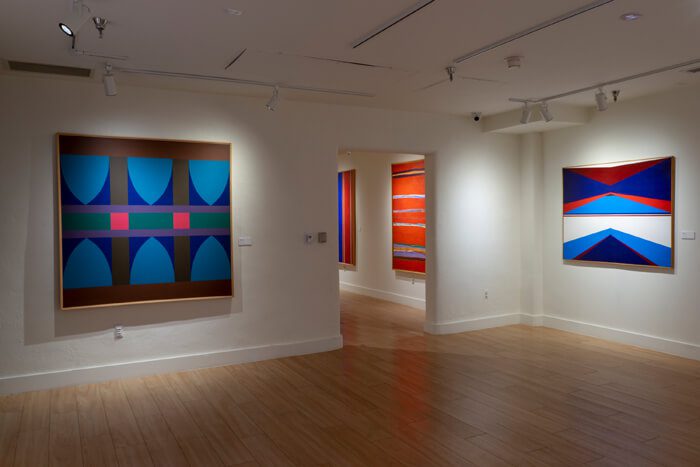
An early painting by T.C. Cannon (Kiowa/ Caddo), Firelights (1965), calls to mind figures in motion with vigorous-but-considered brushwork and, at the same time, Franz Kline, through his use of bold, black gestures. I knew Cannon for his figurative works, similar to Matisse and Hockney, that spoke to Native life and was—admittedly—unaware of his abstract paintings. He was only nineteen when he made Firelights, and his bold use of color, line, and pattern is already visible, and moreover, it’s a successful painting. Due to his tragic and untimely death at the age of thirty-one, it’s rare to see a Cannon in person, and an early work during his formative years is only that much more special. Untitled (Pueblo Forms) (1965), is a quiet work by Neil Parsons (Piikani) that holds my attention as I enter the second gallery. Parsons, also a painting instructor at IAIA, creates beautiful tension with a hard-edge interpretation of a material known for its soft lines: adobe. The superform is a set of horizontal bands of black, raw umber, tan, and mossy gray that balances a palette of tonal shades as if it were a night painting. There’s one bright square of burnt sienna that the whole painting balances on, and I stand there wondering if Parsons and Hammersley ever talked shop over beers.
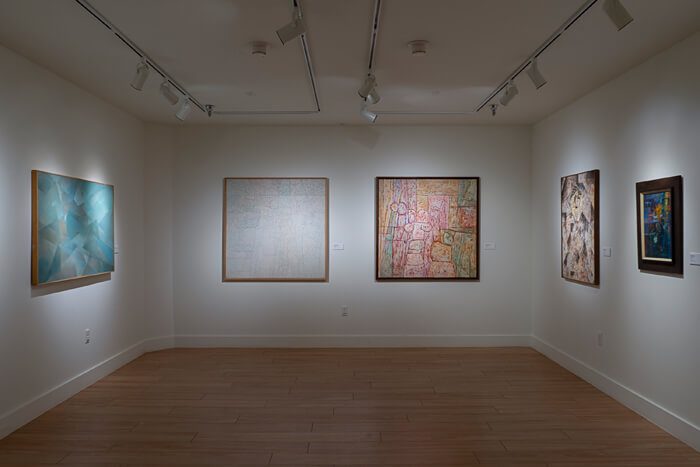
To really spend time with this show is an opportunity to learn the impact and importance of IAIA’s pedagogy and the birth of Santa Fe as a hub of Contemporary Native Art. Seeing New’s ideas realized, the influence of Scholder on future generations of artists, and the reimagining of modernism blended with Native themes and the land by Indigenous artists are the key points that make this memorable. If you’re looking to understand Native Modernism and its artists, I highly recommend this show as a good starting point.
